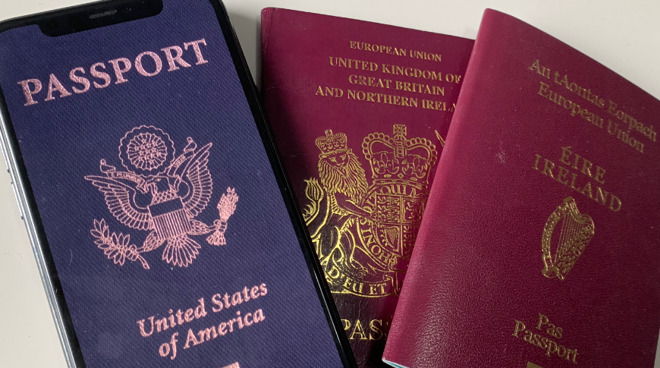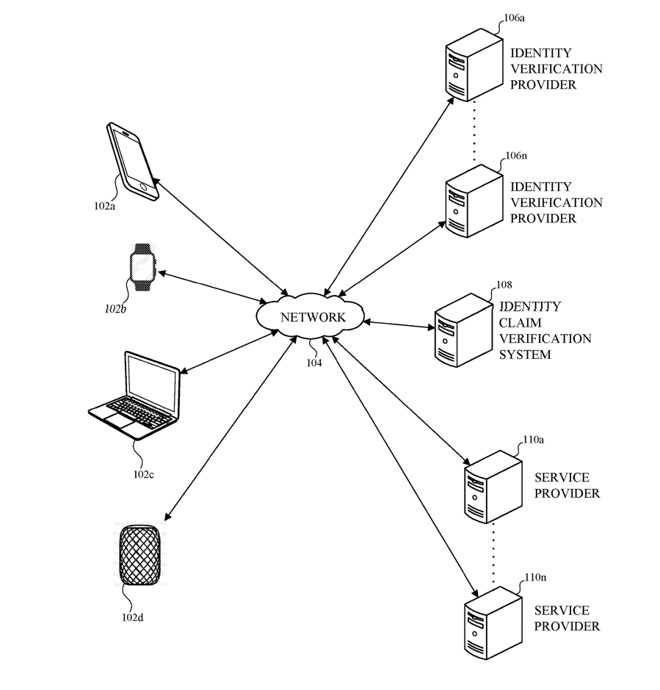Apple wants your iPhone to replace your passport and driver's license
The next step in Apple's goal of making the iPhone the sole thing anyone has to carry, continues with the device being able to securely replace passports, driver's licenses, and other physical forms of identification.

Printed passports may become a thing of the past
Apple most recently announced a plan to rid the world of car keys, but the iPhone has already made us forget what it's like to carry diaries, cameras, pens, and even mirrors. Now the company is focusing on getting rid of passports -- plus library cards, ski passes, and ID cards in general.
A series of slightly different patent applications, all entitled "Providing Verified Claims of User Identity," detail methods by which a user's ID can be recorded or transmitted -- and confirmed. Apple does not use the word iPhone once, but instead refers hundreds of times to devices that could be any piece of technology.
"A device implementing a system for using a verified claim of identity includes at least one processor configured to receive a verified claim including information to identify a user of a device," says one such application, "the verified claim being signed by a server based on verification of the information by an identity verification provider separate from the server, the verified claim being specific to the device."
Under this proposal, a device such as an iPhone could securely transmit some form of ID. If the owner of the device is already verified, say by the biometric sensors in Apple Watch, that verifies the ID being sent.
While Apple's application chiefly refers to passports, it's intended that one system be used for many things. "[This] allows a user to obtain a verified claim of identity that serves as a digital identity for the user, that includes information for identifying the user (e.g., information that was provided by the user and verified by one or more systems), and that can be re-used across different service providers," says the application.
The five borderline-identical patent applications discuss features such as the user's choice to opt-in to providing ID, and technical details of how the data can be securely transmitted. All five are credited to the same six inventors, including Christopher Sharp and Gianpaolo Fasoli, both of whom have prior related patents such as "Data verification via independent processors of a device."
That, Sharp's other patent regarding "Methods and apparatus for user authentication and human intent verification in mobile devices," and these five are far from Apple's first research into iPhone as ID.

Detail from the patent showing that ID may be securely transmitted and received by every type of Apple device
Previously, Apple has worked on secure ways of presenting government ID, and it has worked with both German and UK governments to help local identification projects.
Apple's vice president of internet services and Apple Pay, has publicly said that the company wants to provide ID, but also that it's difficult.
"Identity, to be legal, it has to be government, it has to be authenticated by the government," she said in 2019. "We see, across the globe, many countries starting to use mobile to add a passport.
"You may use a mobile passport when you're going through airports today, and so it is moving and I think it will continue," she added. "So it's not too far away, it just won't be as fast as some of the other activities we have."

Printed passports may become a thing of the past
Apple most recently announced a plan to rid the world of car keys, but the iPhone has already made us forget what it's like to carry diaries, cameras, pens, and even mirrors. Now the company is focusing on getting rid of passports -- plus library cards, ski passes, and ID cards in general.
A series of slightly different patent applications, all entitled "Providing Verified Claims of User Identity," detail methods by which a user's ID can be recorded or transmitted -- and confirmed. Apple does not use the word iPhone once, but instead refers hundreds of times to devices that could be any piece of technology.
"A device implementing a system for using a verified claim of identity includes at least one processor configured to receive a verified claim including information to identify a user of a device," says one such application, "the verified claim being signed by a server based on verification of the information by an identity verification provider separate from the server, the verified claim being specific to the device."
Under this proposal, a device such as an iPhone could securely transmit some form of ID. If the owner of the device is already verified, say by the biometric sensors in Apple Watch, that verifies the ID being sent.
While Apple's application chiefly refers to passports, it's intended that one system be used for many things. "[This] allows a user to obtain a verified claim of identity that serves as a digital identity for the user, that includes information for identifying the user (e.g., information that was provided by the user and verified by one or more systems), and that can be re-used across different service providers," says the application.
The five borderline-identical patent applications discuss features such as the user's choice to opt-in to providing ID, and technical details of how the data can be securely transmitted. All five are credited to the same six inventors, including Christopher Sharp and Gianpaolo Fasoli, both of whom have prior related patents such as "Data verification via independent processors of a device."
That, Sharp's other patent regarding "Methods and apparatus for user authentication and human intent verification in mobile devices," and these five are far from Apple's first research into iPhone as ID.

Detail from the patent showing that ID may be securely transmitted and received by every type of Apple device
Previously, Apple has worked on secure ways of presenting government ID, and it has worked with both German and UK governments to help local identification projects.
Apple's vice president of internet services and Apple Pay, has publicly said that the company wants to provide ID, but also that it's difficult.
"Identity, to be legal, it has to be government, it has to be authenticated by the government," she said in 2019. "We see, across the globe, many countries starting to use mobile to add a passport.
"You may use a mobile passport when you're going through airports today, and so it is moving and I think it will continue," she added. "So it's not too far away, it just won't be as fast as some of the other activities we have."

Comments
I have a copy of my license scanned in to 1Password; it's not considered official or legal documentation, but at least if I get stopped and forgot my license it's something I can show the police.
The bitch, in the US, is still how each State gets to set its own Drivers License policy, so it’ll take many years for everyone to be able to use this, even after it’s released.
No need for that at all if there's a passport on the phone. It could also make issuing an emergency passport easier because they can send it to the phone, depending on how the id verification works. The id can use Face id and store an encoded sample of the face then match that to the person.
I doubt people would use it as the only id because the phone can run out of battery or also be stolen but it would be a great backup to have. Boarding passes for flights are already on phones and a lot of the time a passport isn't even checked now so it makes sense to put the passport on the phone too. The main concern would be avoiding fraudulent passports but the ids will also be stored centrally so a scanner can easily check photo and numbers if they are fake.
I suspect it's a local thing, even though Nanaimo is pretty big and prides itself on being a very tech savvy city. It was only last year that my Credit Union finally let their MasterCards be entered into ApplePay, and their Debit card is still MIA.
There are lots of retailers near me that don't take Apple Pay. In fact, I was in a LensCrafters today and they didn't take it. Last time I was in Home Depot, they stilll didn't take it. I got ApplePay to work once at a Chase ATM and it's never worked since.
I have a photo of my medical insurance ID's on my phone. But the offices I go to won't accept it. They want the actual card because they put it on the Xerox machine to make a copy.
When I first started using ApplePay, I went about a week not carrying a wallet, but had issues. So now I'm still carrying a wallet, albeit a thinner one, and I think it's going to be many years before I don't have to.
But it would be great as a backup. My passport once fell out of my shoulder bag inside the X-ray machine. I was already on the plane when I was notified of such and I had to get off the plane, go back through Security to retrieve the passport, then go back through security and rush back to the plane. I almost didn't make it. if they hadn't found it, I would have entered Europe without a passport. They probably would have sent me back.
https://www.service.nsw.gov.au/campaign/nsw-digital-driver-licence
It's great having the License on the phone, and since 99.9% of shops accept tap-and-go (Apple Pay) I now leave home without my wallet half the time, and it's reducing.